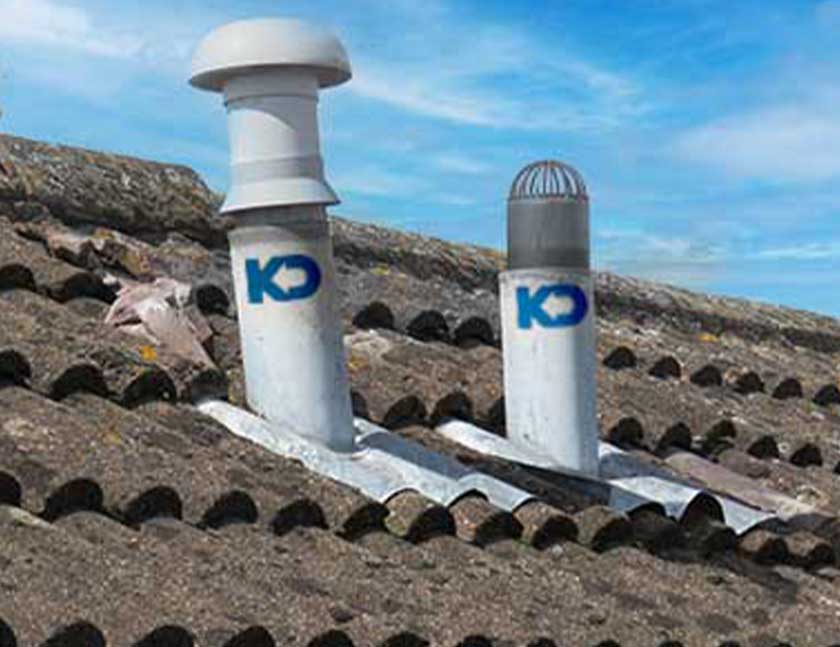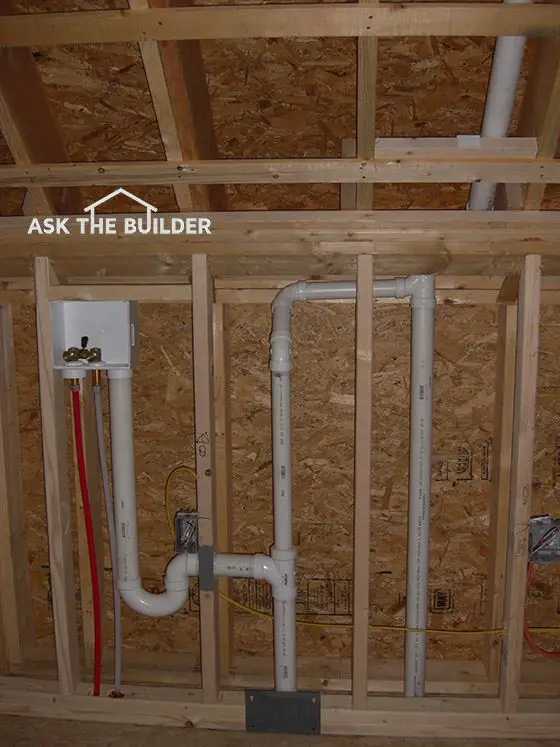How Correct Ventilation Supports Your Plumbing System
How Correct Ventilation Supports Your Plumbing System
Blog Article
Nearly everybody seems to have their own individual perception with regards to Essential Plumbing Vent Pipes: Understanding Their Role.

Proper ventilation in pipes systems is usually forgotten, yet it is essential for keeping the capability and safety and security of your home's plumbing. Ventilation aids manage atmospheric pressure, prevent the build-up of unsafe gases, and guarantee the effective removal of waste. In this overview, we will check out the relevance of appropriate plumbing air flow, how it works, and the advantages it offers your plumbing system.
Comprehending Ventilation in Plumbing
Ventilation in plumbing describes the network of pipelines that allow air to move with the drain system. These vents serve several objectives, including regulating atmospheric pressure within the pipes, avoiding drain gases from entering the home, and helping in the smooth circulation of wastewater.
Just How Air Flow Works in Plumbing Equipments
Air Pressure Guideline
Correct ventilation maintains balanced atmospheric pressure within the pipes system. When water moves via pipelines, it displaces air. Without sufficient air flow, this displacement can produce negative stress, bring about slow drains or siphoning of water from traps, which can trigger undesirable odors to leak right into the home.
Protecting Against Drain Gas Build-up
Among one of the most important functions of pipes vents is to prevent drain gases, such as methane and hydrogen sulfide, from collecting within the home. These gases can posture severe wellness risks and are extremely combustible. Vent pipes allow these gases to leave securely outdoors.
Helping in Waste Elimination
Air flow assists in the reliable removal of wastewater by avoiding airlocks in the drain system. When air can stream freely through the vents, it permits water and waste to move efficiently via the pipelines, reducing the danger of obstructions and back-ups.
Types of Plumbing Vents
Key Stack Vent
The primary stack vent, additionally referred to as the air vent pile, is the primary vent in a pipes system. It expands from the primary drainpipe line up with the roof, allowing gases to get away and fresh air to go into the system.
Branch Vent
Branch vents link to the major pile air vent and offer private components, such as sinks, bathrooms, and showers. These vents guarantee that each component has adequate air flow to work properly.
Air Admittance Valve (AAV).
An Air Admittance Shutoff (AAV) is a one-way shutoff that allows air to go into the pipes system without the demand for a conventional air vent pipe extending via the roof. AAVs are typically utilized in restorations or locations where mounting a typical vent is not practical.
Signs of Poor Ventilation in Plumbing.
Slow Draining Fixtures.
If your sinks, tubs, or commodes are draining pipes slowly, it could be a sign of bad air flow. Inadequate air circulation can produce a vacuum cleaner impact, making it tough for water to drain pipes effectively.
Gurgling Appears.
Gurgling sounds coming from drains are typically an outcome of air being drawn via water catches because of unfavorable pressure in the pipelines. This is a clear sign of insufficient ventilation.
Undesirable Smells.
Drain odors inside your home are a warning that your plumbing system is not effectively aerated. This could suggest that sewer gases are not being effectively aired vent outside, causing possibly hazardous conditions.
Typical Ventilation Blunders.
Inadequate Vent Sizing.
Using undersized air vent pipes can result in inadequate air circulation and stress inequalities in the system. It's essential to use vents that meet the certain needs of your pipes system.
Improper Vent Positioning.
Positioning vents too much from the fixtures they offer can minimize their performance. Appropriate positioning ensures that air can stream easily and effectively through the system.
Ignoring Code Requirements.
Building regulations offer particular standards for plumbing air flow. Overlooking these codes can result in a system that falls short to operate properly and may cause costly repair services or carcinogen.
Benefits of Proper Air Flow.
Enhanced System Effectiveness.
Appropriately aerated plumbing systems operate extra effectively, with less blockages, faster draining, and much less pressure on the pipes. This efficiency extends the life expectancy of the plumbing system.
Improved Air High Quality.
By avoiding drain gases from entering your home, correct ventilation adds to much better indoor air high quality, making your living setting healthier and extra comfy.
Preventing Water Damage.
Adequate ventilation helps prevent water from being siphoned out of catches, which can bring about drain gases entering the home and causing water damage with time.
Steps to Guarantee Appropriate Ventilation.
Consulting Pipes Codes.
Always speak with local pipes codes when developing or modifying your pipes system. These codes give the required guidelines for appropriate venting and guarantee your system satisfies safety and security standards.
Routine Evaluation and Upkeep.
Regular inspections can assist identify prospective air flow issues prior to they end up being major troubles. Maintenance tasks, such as cleaning vent pipes and checking for obstructions, are vital for maintaining the system in good working order.
Specialist Setup.
For brand-new installations or significant modifications, it's wise to employ an expert plumbing. They have the experience to ensure the air flow system is correctly created and mounted according to code.
Conclusion.
Appropriate ventilation is a vital component of any type of pipes system, ensuring that it functions successfully and securely. By understanding the significance of air flow, acknowledging the indicators of poor air flow, and taking steps to preserve your system, you can prevent pricey problems and protect your home's air top quality.
4 Things You Should Know About Your Plumbing Vents
What Plumbing Vents Are
Also called a vent stack, a plumbing vent is a vertical pipe attached to your drain line that runs through your roof. The plumbing vent pipe, or plumbing air vent, removes gas and odors from your plumbing system and allows fresh air to enter the pipes, helping the water to flow out of the drain pipes.
What Plumbing Vents Do
Plumbing vents have two basic functions. One of which is to allow unpleasant smelling wastewater and sewer gasses to escape your plumbing system instead of entering your home. Plumbing vent pipes are typically located on roofs, away from windows, to ensure the fumes exit the home completely.
The other function of the plumbing vent is to move fresh air into your plumbing system. This helps move water through every plumbing fixture in your house, like toilets and sink drains. Think of the way in which you need to let a little air into the bottle as you pour soda in order to make the drink flow smoothly.
Different Types of Plumbing Vents
True vent: This is the most common vent option. In simplest terms, a true vent is a vertical pipe attached to your drain line that exits through the roof. They often function as the main vent that other fixtures can connect to. Re-vent pipe or auxiliary vent: Attached to the drain line near specific plumbing fixtures, re-vent pipes run up and over to connect to the main vent. Common vent: Two plumbing fixtures installed on opposite sides of a wall are typically tied into the vent stack using something known as a sanitary cross. Wet vent: This venting option operates as a drain pipe and a vent at the same time. Wet vent drainage systems drain water from one fixture while venting the air from another. Although they’ve been used for over 100 years, wet vent systems have only recently been added to the plumbing code in many areas. If you’re planning on installing one in a bathroom remodel, make sure you check your local code prior to construction. Loop vent: For free-standing fixtures like kitchen island sinks, loop vents are ideal. These vent pipes run under the floor, rise from the P-trap, and create a loop inside the cabinet sink. Air admittance valve: An AAV is a one-way mechanical valve typically installed at the site of the plumbing fixture. AAVs allow venting to occur without having to tie into a larger venting system. They’re ideal for venting fixtures where you aren’t able to easily connect to an existing vent system. Common Plumbing Vent Issues
Although vent pipes typically don’t have water flowing through them, they’re still subject to many typical plumbing issues. For example, clogs are one of the most common problems associated with sewer vent pipes. If your vent pipe gets clogged, all of your plumbing fixtures tied into the vent stack will be affected.
A sink with a slow drain that bubbles and gurgles or a strong sewage smell around your toilet are both indicators that your toilet vent pipe is clogged. Because most vent pipes exit through the roof, old leaves, twigs or even a bird’s nest could be clogging the pipe.
Clogs in your vent pipe system cause a buildup of negative pressure, meaning that water won’t be able to flow out of your home very well. It’s similar to putting your finger over the opening of a straw to trap water inside. When you remove your finger, the water is able to flow out of the straw.
If you suspect you have any blockage in your vent, make sure you have a professional come examine the situation. Left unchecked, a blocked air vent can lead to other costly repairs, like leaks and sediment buildup.
Under Pressure
Pipe vents are essential aspects of a home’s plumbing system. Owning a home means learning about all sorts of things you never put much thought into before. But by understanding as much as you can about the important systems of your home, you can keep those budgets intact and those anxiety levels low.
https://www.homeserve.com/en-us/blog/home-improvement/plumbing-vents/

As an enthusiastic person who reads on Essential Plumbing Vent Pipes: Understanding Their Role, I imagined sharing that portion was a great idea. So long as you liked our blog post kindly do not forget to share it. Kudos for being here. Come back soon.
Schedule Today Report this page